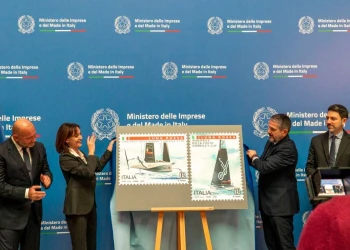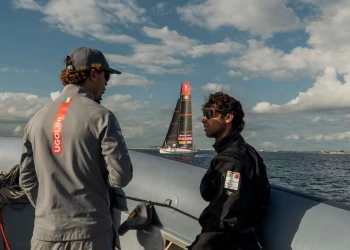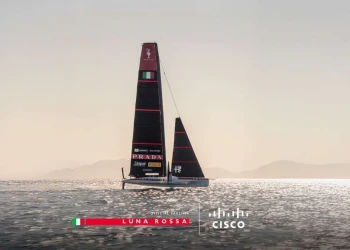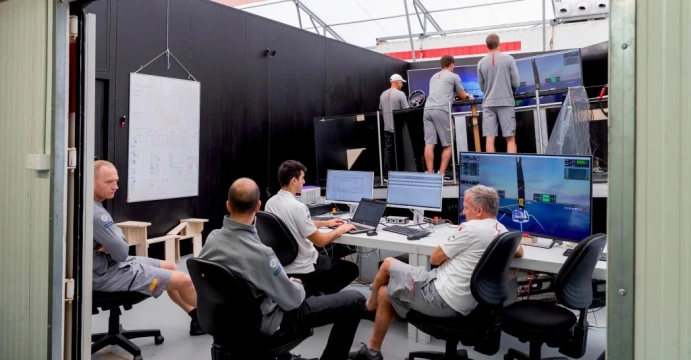
The role of the simulator in the 36th America's Cup
Luna Rossa, the role of the simulator in the 36th America's Cup
This new, powerful tool has given a massive boost to the process of design and development. Sophisticated software and data accuracy were key factors to recreate a virtual AC75.
The use of the simulator has held a very important role in the latest America’s Cup event.
This time the simulator, already used in previous editions, became a crucial tool in the design and development of the AC75 and in the training activities of the sailing team.
The Class Rule, included in the Protocol of the 36th edition, prohibited teams from performing tests on "fluid dynamics projects, at any scale, in any controlled environment such as the wind tunnel, the cavitation tunnel and the naval tank”, obliging designers to develop prediction and simulation software even more accurately. The result was the construction of a powerful physics simulator that could faithfully reproduce the AC75.
Furthermore, among the rules of this latest edition, the challenging teams were forbidden to train with two boats at the same time, so the sailors also had to practice with the simulator which, through virtual reality, reproduced the possible scenarios of a navigation session.
The Luna Rossa Prada Pirelli simulator is a six degree of freedom platform that simulates the movements of the hull such as accelerations, rotations and changes in position that the boat can assume in different conditions. The software, used to create a virtual replica of the AC75, was provided by the SumToZero, a company with extensive expertise in simulation for marine navigation, in particular for the America's Cup.
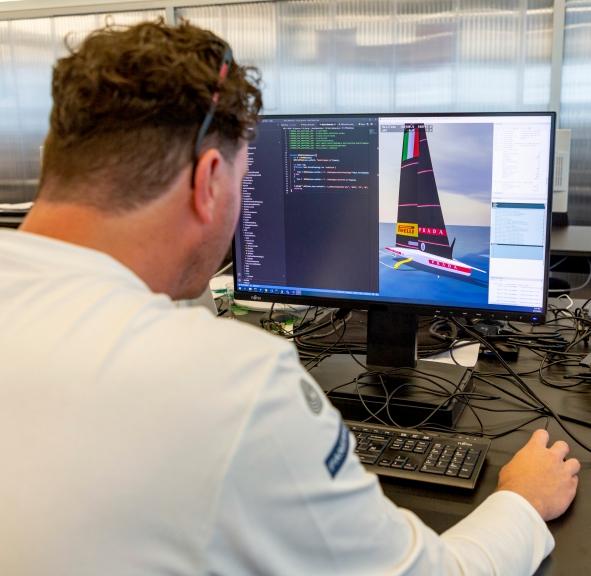
The programmers created a digital twin, in other words a virtual copy, configured just like a real AC75, not only for its movements but also in the configuration of the cockpit on the platform and equipped with the same devices installed on the real boat. Accurate reproductions of the rudders have also been installed, together with the soft wing and foil control devices, to create an environment as close as possible to reality. When the sailing crew boarded the AC75 for the first time, they were already familiar with the hull and the manoeuvres and were able to fly the boat from day one, thanks to the experience gained in hours of simulation.
The simulator is equipped with screens that reproduce the navigation environment but can also be used with an oculus for an even more immersive experience. It is very similar to a video game in terms of layout, but the software that runs it uses much more advanced calculation models that make it exceptionally accurate. To achieve excellent levels of precision, the system is integrated with hull and sail plan data, resulting from the calculations and simulations developed by the designers, such as fluid dynamic models (CFD) and velocity prediction programs (VPP).
What makes it an extremely complex software, compared to normal flight and car simulators, is the integration with weather data, such as wind speed and sea conditions, which can also be dynamic, i.e., change abruptly during the simulation session.
Working with a tool that allows real-time simulations has great advantages. When designers create a new component, this can be loaded into the virtual model of the simulator in a matter of minutes. In this way, the interaction and behaviour of the new element with respect to the components of the boat is immediately tested, allowing the designers to evaluate the goodness of the choices and, to the sailors, to immediately give feedback. This increases the ability to explore different design solutions and concepts and incorporate the input of each sailor, who can test the new components in a very short time. The possibility of receiving this information already in the design phase is a great advantage and allows you to significantly reduce development times.
It also allows for a certain repeatability of conditions, which in the real world cannot happen, and enables the study of specific situations in more detail, to obtaining more precise data.
In the final stages of the campaign, the simulator was transformed from a design tool to a racing tool. The possibility of two-boat racing was added to the virtual model and, together with a variety of weather conditions, different scenarios that could occur in a regatta were simulated. The training program of the sailing team included, further to sea trials, also long sessions on the simulator to familiarize with the behaviour and sailing modes of the AC75 when competing against another boat.
Building a simulator that is reliable and as close to reality as possible is not easy, especially in an environment like the America's Cup, where updates and upgrades occur daily.
After the launch of the first boat the team achieved increasingly high levels of accuracy. The comparison between the expected performances vs. the actual ones allowed visibility of all the small anomalies that could occur in the physics of the simulations; once these were corrected the predictions became even more exact.
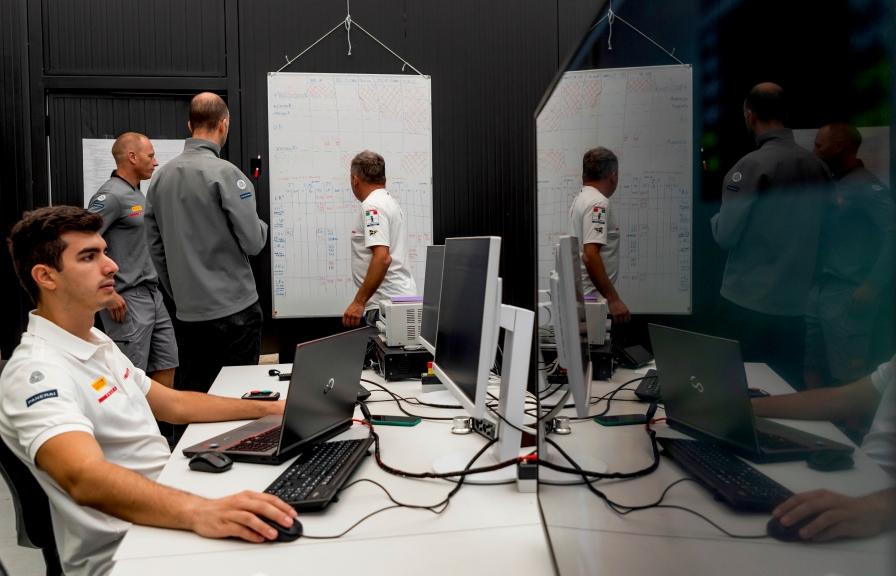
In the future, with the increasingly powerful computing properties of computers, the simulator will be an even more decisive tool for design, becoming the foundation of the entire development process. Design Team, Sailing Team and Shore Team will have the opportunity to deal with a single tool that incorporates multiple types of information; it will accelerate the process of performance verification and the choices for design and optimization: a factor to be taken into great consideration in the America's Cup, where time is the most precious element of all.



